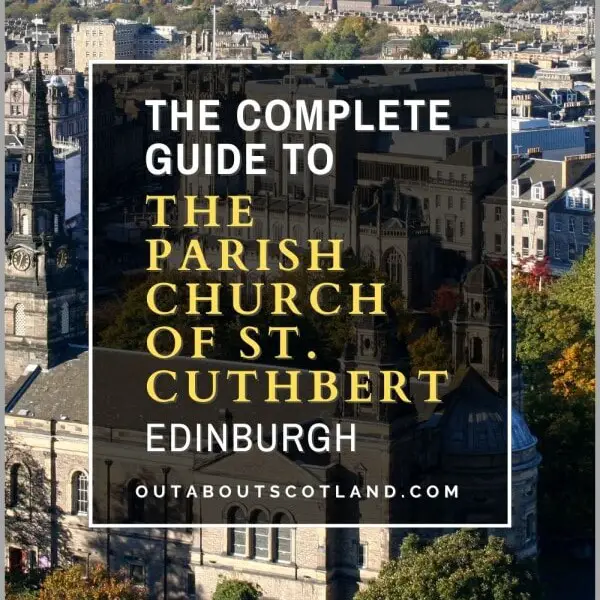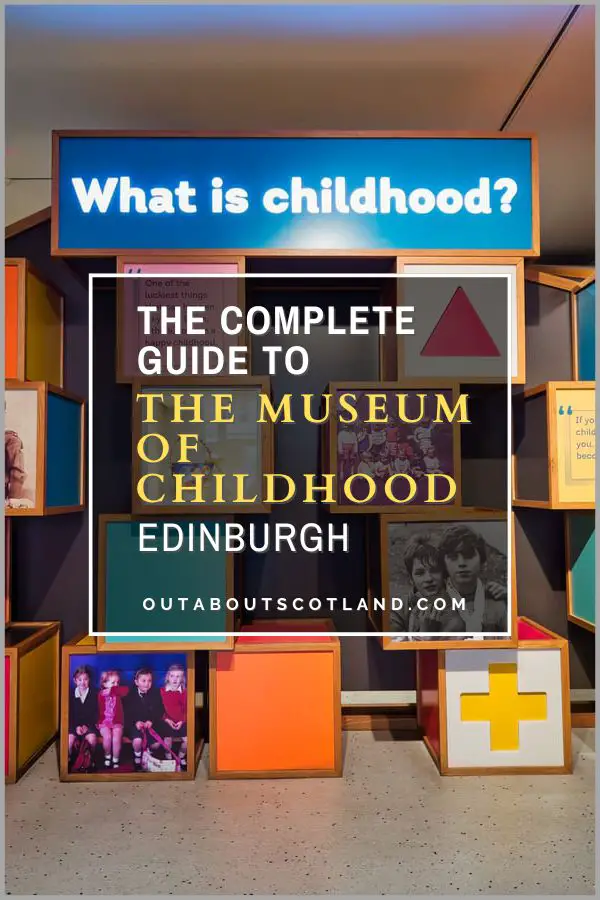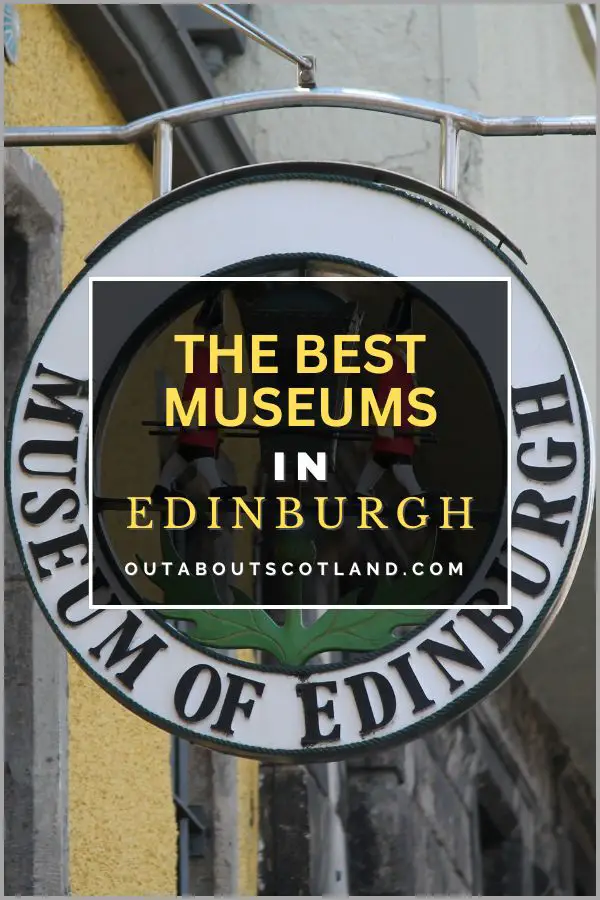In this article, we’ll explore the Parish Church of St. Cuthbert in Edinburgh’s Old Town, a stunning architectural marvel nestled in the heart of Scotland’s capital on the western edge of Princes Street Gardens. Steeped in history, the Parish Church of St. Cuthbert is believed to have been founded around 670 AD by St. Cuthbert himself, making it one of the oldest continuously active Christian sites in Scotland.
Boasting a unique blend of architectural styles, the church has undergone several renovations over the centuries and is now one of the most beautiful buildings in the city and a must-visit destination for all tourists.
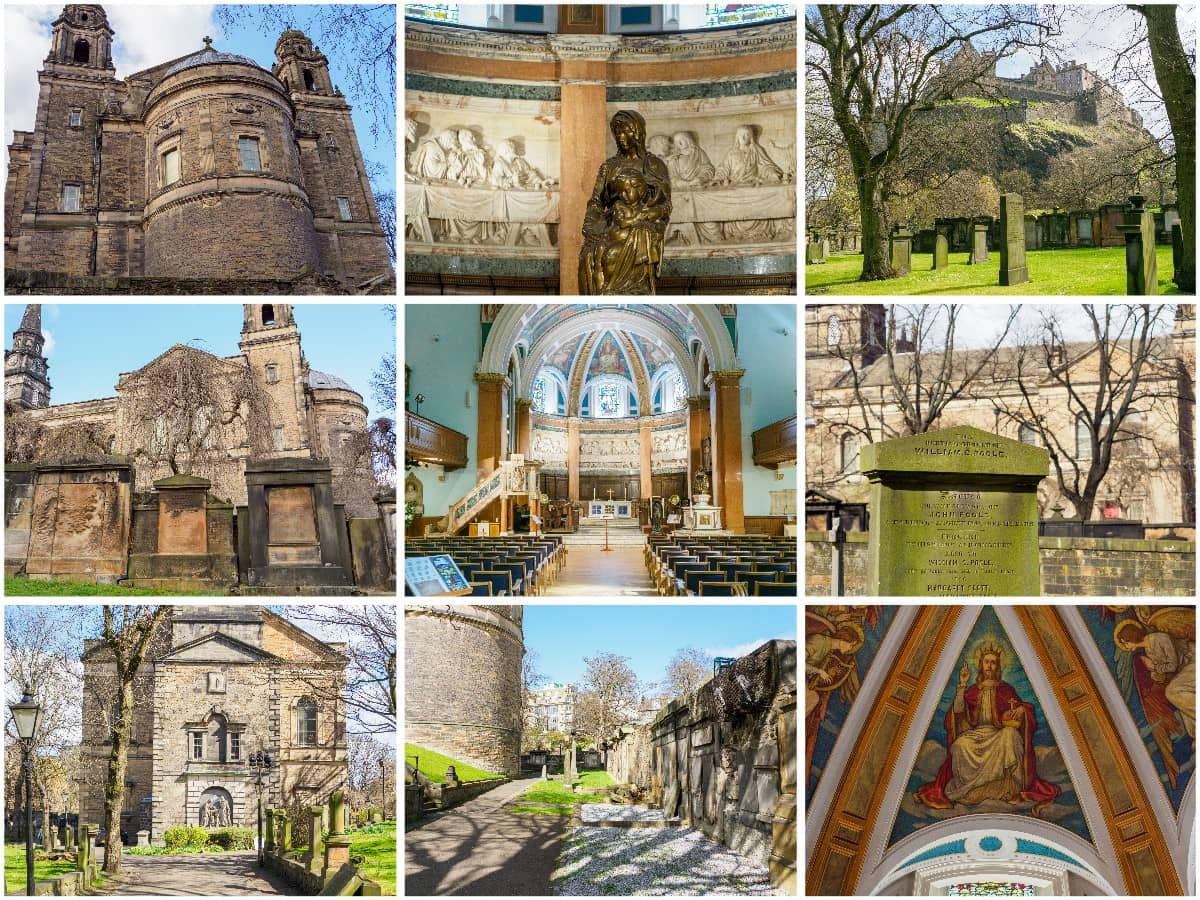
| Address: | 5 Lothian Road, Edinburgh, EH1 2EP |
| Opening Hours: | April to September: Tuesday-Friday 10.00am – 3.00pm |
| Admission Price: | Free entry |
| Parking: | No on-site car park |
| Contact: | email: office@stcuthberts-edinburgh.uk Tel: 0131 229 1142 |
| Facilities: | Toilets, gift shop |
| Photos: | Virtual Tour YouTube Video |
Overview
The Parish Church of St. Cuthbert is something of a hidden gem in Edinburgh. It’s not exactly “hidden,” but due to its location at the far western end of Princes Street Gardens, tourists tend to ignore it.
The church is dedicated to St. Cuthbert (obviously), who is believed to have preached on the spot in the 7th century. Back then, there would have been nothing but fields for miles around, but as Edinburgh grew, the church’s location surrounded by buildings, and it is now located at the busy intersection of Princes Street and Lothian Road.
The church we see today isn’t the original, of course, and in fact, there are thought to have been at least seven earlier churches built on the site over the years, with the current one dating from 1892. If you’re wondering why there were so many earlier churches, the answer comes from its location at the foot of Edinburgh Castle, one of the most besieged castles of any city in the world.
Hundreds of years of conflicts meant that the Parish Church of St. Cuthbert was vulnerable to attack as it was a prime location for troops to take refuge in, including the infamous Bishop’s Wars of 1640–1642, which eventually spread out to England and Ireland, and the failed occupation of Edinburgh by the Jacobites in 1745.
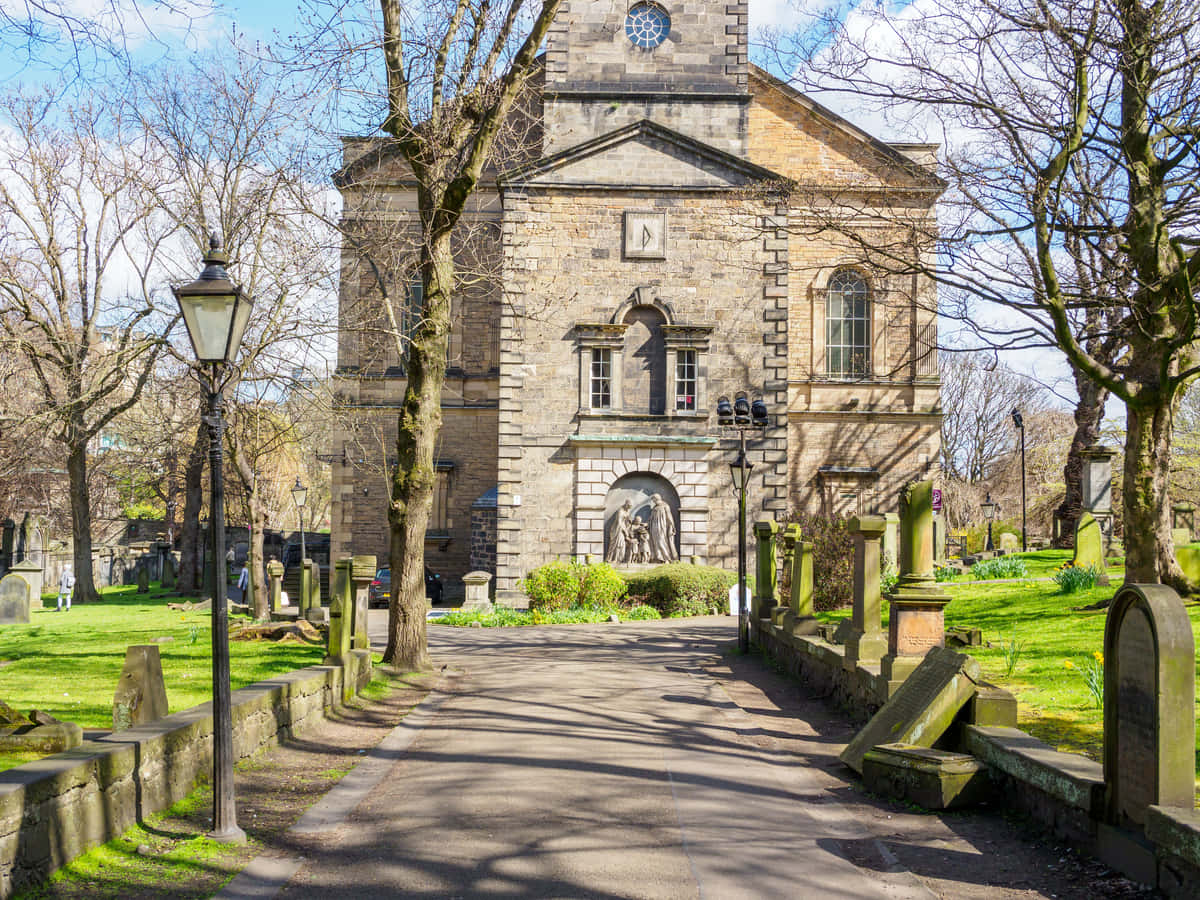
After the church fell into ruin in the 1800s the old building was demolished and the current one was commissioned, initially with a rather plain interior but with many embellishments subsequently added during the 20th century. The exterior, meanwhile, is very grand and typical of the imposing architecture found elsewhere in Edinburgh’s New Town, especially when viewed from the western side on Lothian Road.
Before entering the Parish Church of St. Cuthbert it’s worth taking a good walk around the exterior to admire it from the outside before heading into the graveyard to look at the ancient tombstones. As one of the oldest kirkyards in the city, it’s a remarkable place that absolutely drips with atmosphere, and with the castle framing the background, it has to be one of the best places for photographers in Edinburgh.
After exploring the graveyard, it’s time to head inside the church—unless it’s winter, in which case you’ll probably find the main doors closed. If you’re in this situation, you might like to take a look at the virtual tour I made of the church, which you can see by clicking the link on my Virtual Tour Map.
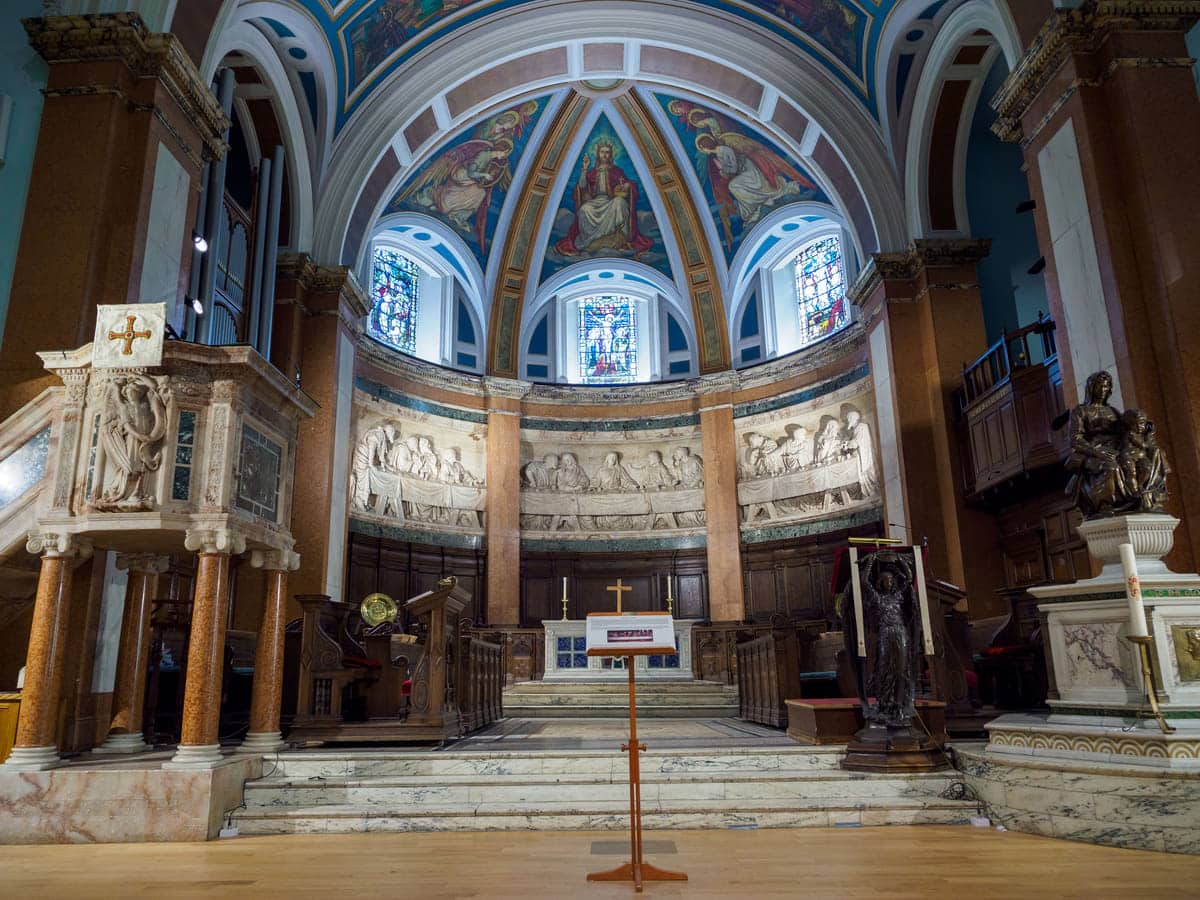
The Highlights
1: This church is absolutely beautiful inside, but the apse (the coved area at the far end behind the communion table) is the real highlight. Take a good look when you visit to really appreciate the workmanship that went into creating the alabaster frieze on the wall of the apse, which rivals any of the decorations in St. Giles Cathedral.
2: There are lots of details to keep an eye open for in the Parish Church of St. Cuthbert including the mural on the domed roof of the apse and the stunning stained-glass windows that depict stories from the Old Testament. One of these windows on the north side of the church was created by Tiffany’s of New York and is one of only five of its kind in Britain.
3: Graveyards aren’t normally places where you’d go sightseeing but the one at the Parish Church of St. Cuthbert is well worth taking a look around, not only for the gravestones but also for the incredible views. Look up to see Edinburgh Castle looming overhead and enjoy a unique angle of Scotland’s top attraction that’s difficult to appreciate from anywhere else in the city.
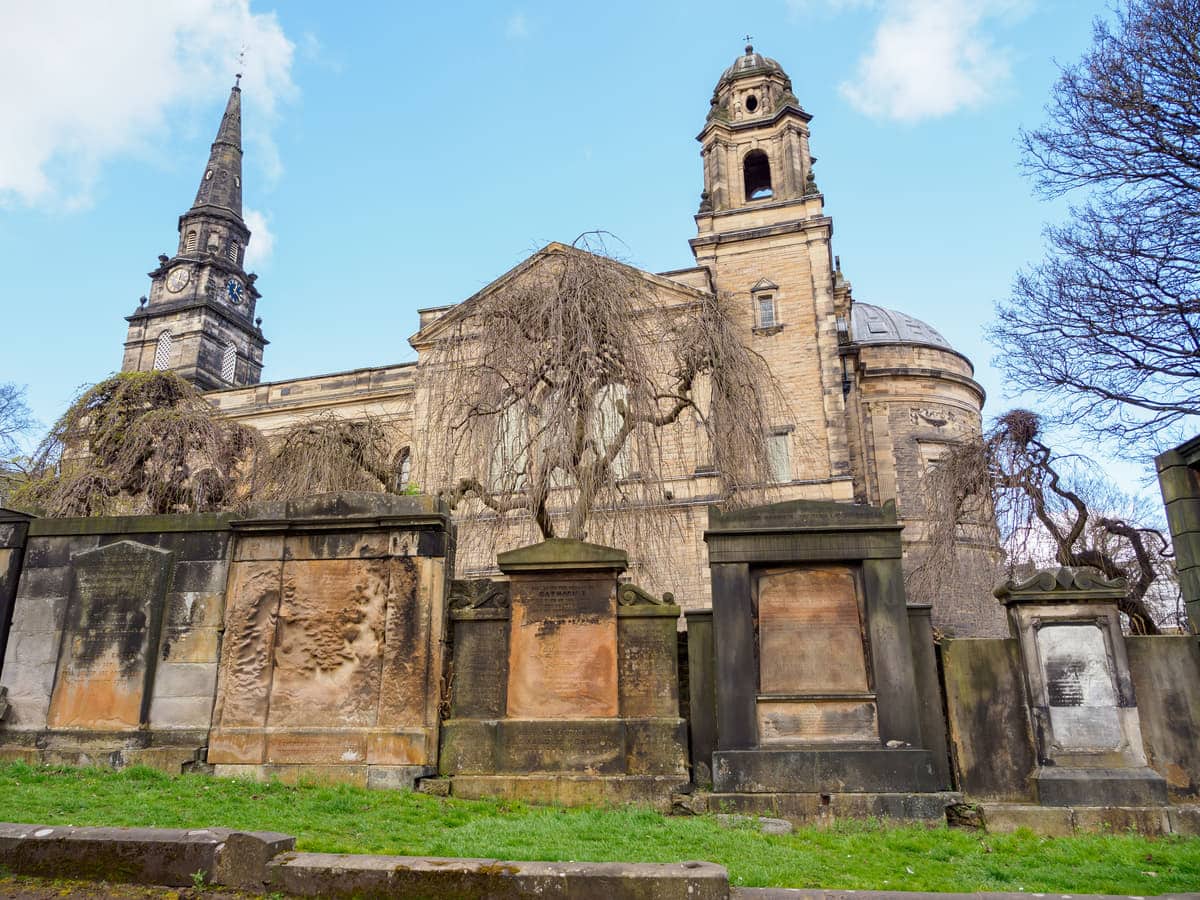
Visiting Tips
1: This is without a doubt one of the most attractive churches in Edinburgh, but visitors should be aware that it isn’t open year-round. In fact, it’s only open between April and September, Tuesday to Friday.
2: Tourists hoping to include this church in their sightseeing itineraries will find it by walking through Princes Street Gardens. At the far end, next to the play park, there’s a gated wall that opens to the graveyard, with the church entrance offset to one side. There’s another entrance on Lothian Road on the opposite side of the church, which has steps and isn’t suitable for disabled access.
3: As it’s situated right in the heart of Edinburgh there are plenty of facilities for visitors. The church itself has accessible toilets on the ground floor and there are more toilets upstairs, as well as public toilets behind the Ross Bandstand in Princes Street Gardens.
As far as food goes, you’re spoilt for choice thanks to umpteen cafes and restaurants on Lothian Road and even more on Princes Street. For car parking, the nearest option is NCP Castle Terrace (postcode EH1 2EW), but prepare for a shock as it’s horrendously expensive at around £10 per hour.
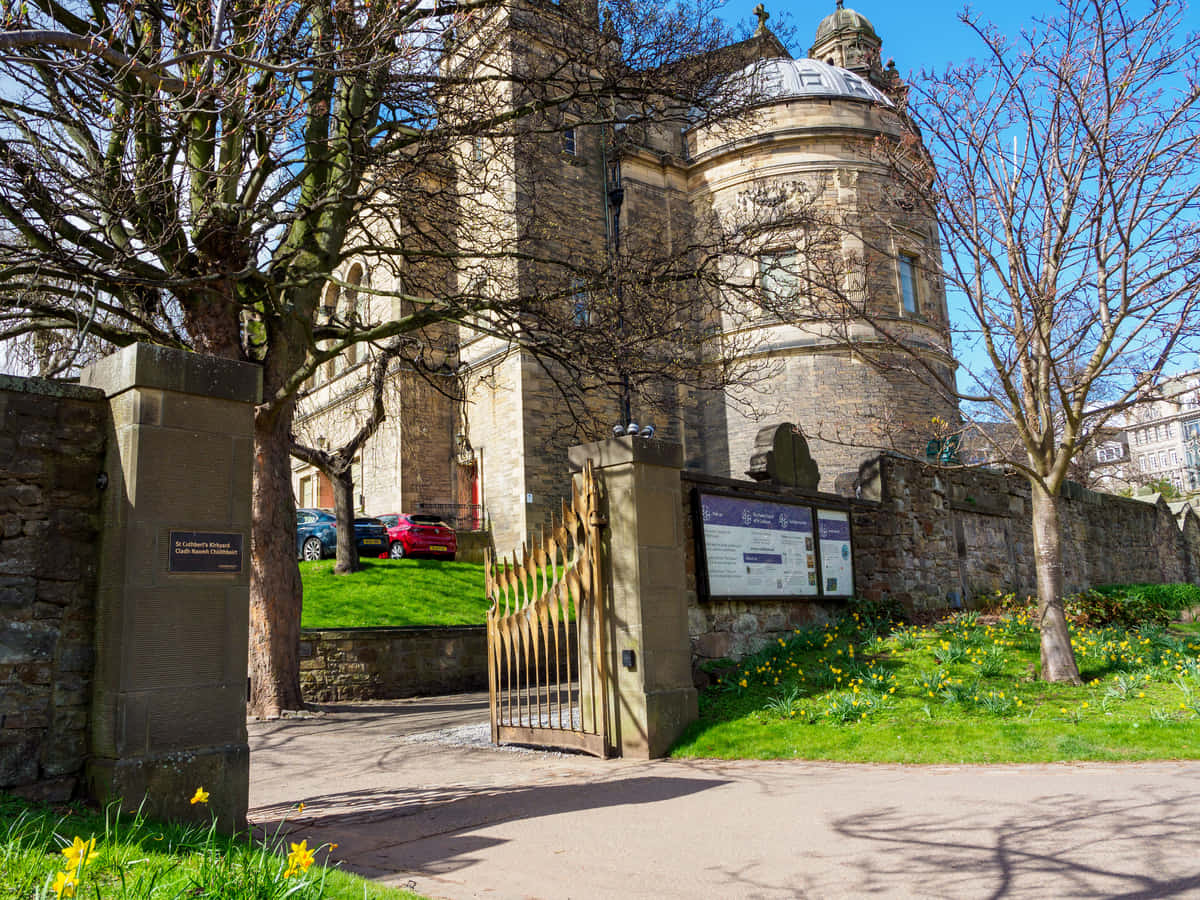
Tourist Information
The main entrance of the Parish Church of St. Cuthbert opens onto a vestibule which runs across the width of the church and has several monuments and artefacts inside it including one of the old bells from the 1700s.
There are usually staff on hand in the vestibule who’ll be able to answer any questions you may have and they’ll also be able to direct you through the Lammermuir room to the main doors that lead into the church proper.
While nearby St. Mary’s Episcopal Cathedral trumps St. Cuthbert’s church in size, the latter feels much more airy and grand, mainly due to the ornate apse at the far end. The carvings and paintings of the apse are nothing short of stunning, so if you have a camera, you might like to take it with you,though remember that you’ll have to disable the flash.
Other features to take note of are the pulpit, which has stone imported from Italy, and the stained glass windows, which depict scenes from the Old Testament alongside a more modern window created by Tiffany’s.
With regards to facilities, there’s a disabled toilet on the ground floor near the entrance along with another upstairs, and access is suitable for all abilities thanks to wide doorways and flat, level floors except for the communion table which has small steps leading to it.
All in all, it’ll take around an hour to fully explore the Parish Church of St. Cuthbert, including the graveyard, and you won’t have to spend a penny during your visit as it’s completely free to enter. That being said, there’s a donation box in the Lammermuir room where you can leave a few pounds to help with the upkeep of the building, or perhaps buy a memento or two from the gift shop.
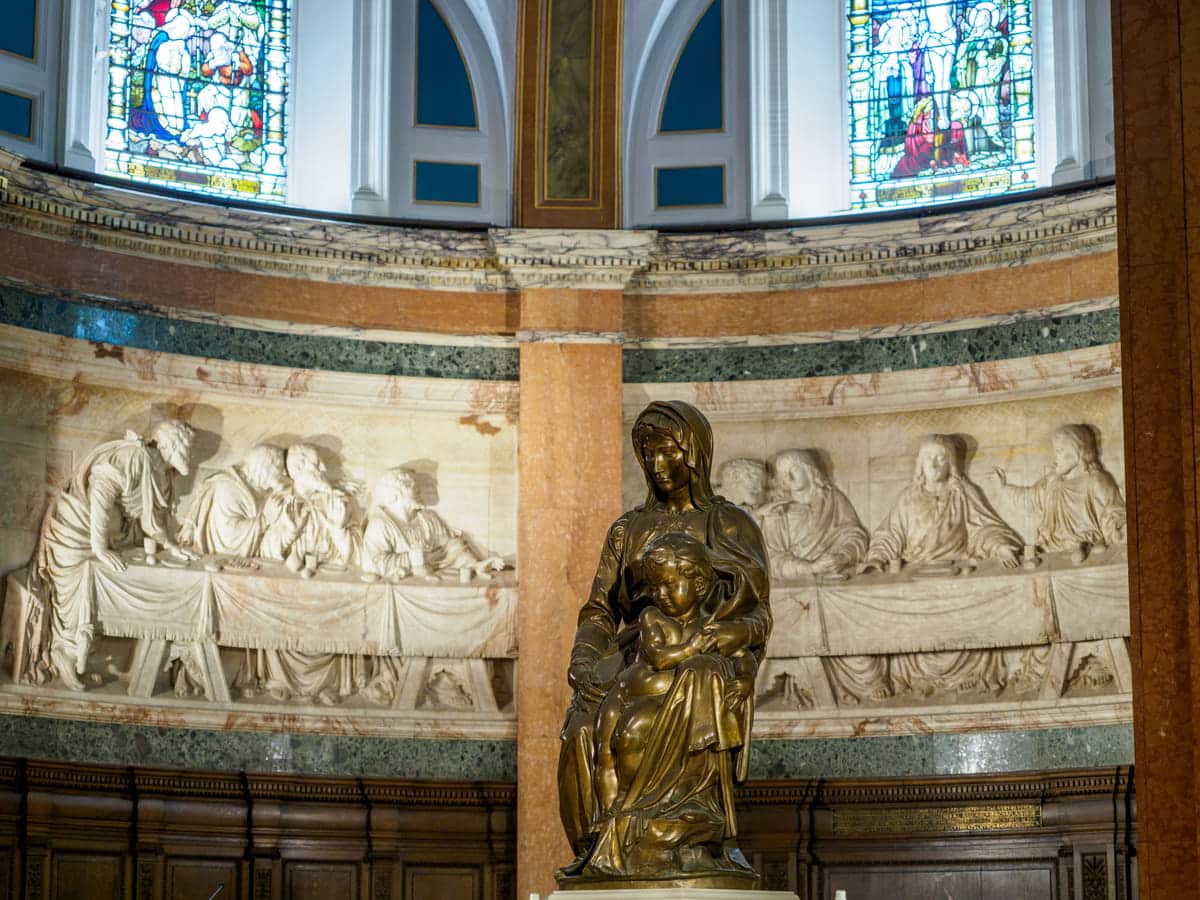
Things to Do
Explore the Architecture: St Cuthbert’s is a magnificent example of Scottish church architecture with its stunning stained glass windows and intricate stone carvings. Take your time to appreciate the artistry and craftsmanship that has gone into every detail.
Attend a Service: Being an active parish, St Cuthbert’s holds regular services. Participate in a traditional Scottish religious service, experience the organ music, and join in community prayer. It’s a unique cultural experience to be savoured, regardless of your religious beliefs.
Visit the Churchyard: The churchyard of St Cuthbert’s is a peaceful retreat in a beautiful setting which has amazing views of Edinburgh Castle. It’s also the final resting place of many notable Scots, making it a fascinating place for history buffs.
Learn about History: St Cuthbert’s has a rich history dating back to the 7th century (though the current building dates from 1894). Learn about its history, from its founding to its role in the Scottish Reformation, and how it has evolved over the centuries.
Attend a Concert: St Cuthbert’s is known for its exceptional acoustics. It’s a popular venue for the Edinburgh fringe festival so check the official website if there are any concerts scheduled during your visit. Listening to music in such a beautiful and historic setting is a truly unforgettable experience.

Things to Do Nearby
Princes Street Gardens. Princes St., Edinburgh, EH1 2EU, 0 miles.
Large landscaped gardens that border Princes Street. The gardens feature a number of attractions, including the Ross Fountain, the Scott Monument, and the Ross Bandstand. The Scottish National Gallery divides them into two sections, east and west.
Edinburgh Castle. Address: Castlehill, Edinburgh, EH1 2NG. Distance: 0.6 miles.
Edinburgh Castle is Scotland’s most-visited attraction, welcoming over 2 million visitors annually. The castle has a history spanning 1,000 years and is home to a number of separate attractions including the National War Museum, the Royal Scots Museum, the Royal Palace, and the Honours of Scotland (the nation’s crown jewels).
The Scott Monument. East Princes Street Gardens, Edinburgh EH2 2EJ. 0.6 miles.
This is a Gothic-style monument with a staircase that leads onto viewing platforms. The monument is dedicated to Sir Walter Scott and is located in East Princes Street Gardens.
Scottish National Gallery. Address: The Mound, Edinburgh, EH2 2EL. Distance: 0.4 miles.
The Scottish National Gallery is the foremost gallery for Scotland’s national collection of paintings. The gallery houses priceless artworks with a focus on Scottish culture and historical figures although it also houses masterpieces by Botticelli, Raphael, and Titian.
Johnnie Walker Princes Street. Address: 145 Princes Street, Edinburgh, EH2 4BL. Distance: 0.2 miles.
This is one of Edinburgh’s newest tourist attractions, combining a whisky shopping experience with tours and tastings of Johnnie Walker whisky in an on-site bar.
Frequently Asked Questions
What religion is the Parish Church of St. Cuthbert?
The Parish Church of St. Cuthbert in Edinburgh is a Christian church, specifically belonging to the Church of Scotland which is a Presbyterian denomination.
What is the largest church in Edinburgh?
The largest church in Edinburgh is St. Mary’s Cathedral, also known as the Cathedral Church of Saint Mary the Virgin. It is a Scottish Episcopal Church and is located at the west end of the city on Palmerston Place. The main spire is 295 feet (90 metres) tall and houses 12 bells.
Was St Cuthbert a Roman Catholic?
St. Cuthbert was a Christian saint who lived in the 7th century, before the split between the Roman Catholic Church and the Eastern Orthodox Church. While he would not have been considered ‘Roman Catholic’ in the modern sense, his religious beliefs and practices were aligned with the early Christian church that later evolved into the Roman Catholic Church.
When was the Parish Church of St Cuthbert built?
The origins of Edinburgh’s Parish Church of St. Cuthbert can be traced all the way back to the 7th century. There have been previous churches on the site but the present building opened its doors on July 11, 1894 after having its foundation stone laid on May 11, 1890.
The nineteenth and early twentieth centuries saw extensive restoration and enlargement of the building and it is now regarded as one of the most beautiful churches in Edinburgh.

